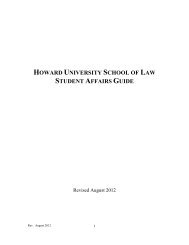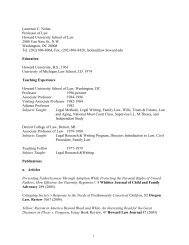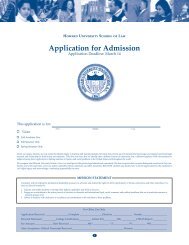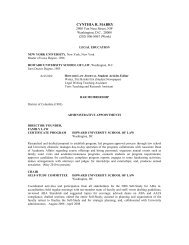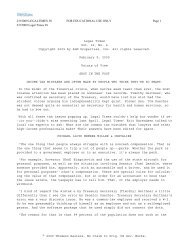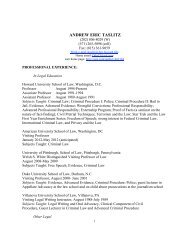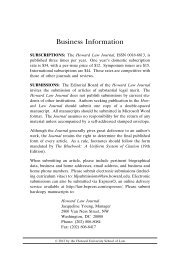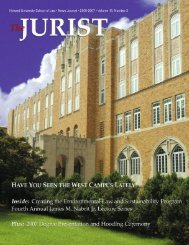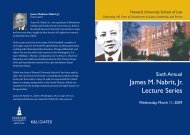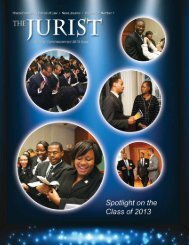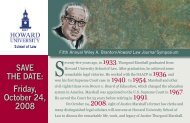Fisher v. University of Texas (on behalf of the Civil Rights Clinic)
Fisher v. University of Texas (on behalf of the Civil Rights Clinic)
Fisher v. University of Texas (on behalf of the Civil Rights Clinic)
You also want an ePaper? Increase the reach of your titles
YUMPU automatically turns print PDFs into web optimized ePapers that Google loves.
2aut<strong>on</strong>omy and out <str<strong>on</strong>g>of</str<strong>on</strong>g> respect for its expertise, itsdecisi<strong>on</strong> deserves judicial deference.We submit this brief in support <str<strong>on</strong>g>of</str<strong>on</strong>g> resp<strong>on</strong>dents inorder to respectfully urge this H<strong>on</strong>orable Court touphold <strong>the</strong> decisi<strong>on</strong> <str<strong>on</strong>g>of</str<strong>on</strong>g> <strong>the</strong> United States Court <str<strong>on</strong>g>of</str<strong>on</strong>g>Appeals for <strong>the</strong> Fifth Circuit, affirm its own holdingin Grutter and find that UT Austin acted within itsc<strong>on</strong>stituti<strong>on</strong>ally protected z<strong>on</strong>e <str<strong>on</strong>g>of</str<strong>on</strong>g> academic aut<strong>on</strong>omywhen it reintroduced race as <strong>on</strong>e factor in its admissi<strong>on</strong>decisi<strong>on</strong>s in order to seek <strong>the</strong> educati<strong>on</strong>albenefits flowing from diversity.SUMMARY OF ARGUMENTUniversities “occupy a special niche in our c<strong>on</strong>stituti<strong>on</strong>altraditi<strong>on</strong>.” Grutter, 539 U.S. at 329. Thisspecial niche is rooted in <strong>the</strong> First Amendment whichprovides that, within c<strong>on</strong>stituti<strong>on</strong>al limits, a universityis free to determine <strong>on</strong> academic grounds “whomay teach, what may be taught, how it shall betaught, and who may be admitted to study.” Sweezyv. New Hampshire, 354 U.S. 234, 263 (1957). In <strong>the</strong>c<strong>on</strong>text <str<strong>on</strong>g>of</str<strong>on</strong>g> student body selecti<strong>on</strong>, <strong>the</strong> respect for academicaut<strong>on</strong>omy has manifested itself in <strong>the</strong> Court’sdeference to a university’s good faith determinati<strong>on</strong>that a compelling state interest in student bodydiversity exists and that race can be <strong>on</strong>e <str<strong>on</strong>g>of</str<strong>on</strong>g> <strong>the</strong> factorsc<strong>on</strong>sidered in pursuit <str<strong>on</strong>g>of</str<strong>on</strong>g> such.The Court’s deference is nei<strong>the</strong>r without good reas<strong>on</strong>nor without c<strong>on</strong>stituti<strong>on</strong>al limits. A diverse classnot <strong>on</strong>ly benefits classroom discussi<strong>on</strong> but alsoprovides <strong>the</strong> opportunity for cross-cultural understandingin social settings. Additi<strong>on</strong>ally, <strong>the</strong> maintenance<str<strong>on</strong>g>of</str<strong>on</strong>g> a diverse student body communicates to <strong>the</strong>general public <strong>the</strong> university’s willingness to engagediverse viewpoints – a necessary part <str<strong>on</strong>g>of</str<strong>on</strong>g> a vibrant



